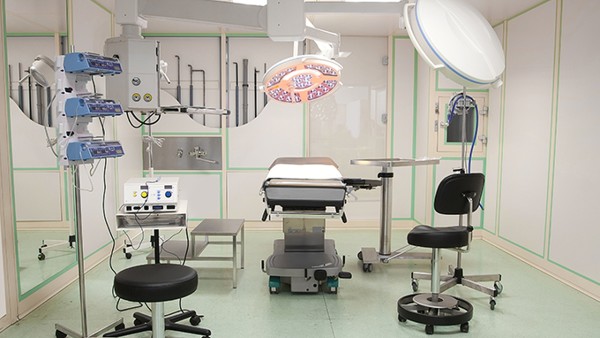Postpartum Body Shaping Training Starts!

Understanding the Postpartum Body
After childbirth, your body undergoes significant changes as it recovers from the pregnancy and birth process. These changes can include:
Uterine contractions: The uterus, which expanded during pregnancy to accommodate the growing baby, contracts to return to its original size. This can cause cramping and discomfort.
Vaginal discharge: The vagina experiences increased discharge known as lochia, which lasts for several weeks after birth.
Breast tenderness: Your breasts may become swollen and tender due to increased milk production.
Abdominal separation: The muscles of the abdomen (rectus abdominis) may have separated during pregnancy, creating a condition known as diastasis recti.
Pelvic floor muscles: These muscles, which support the bladder, rectum, and uterus, may have been weakened during childbirth.
These changes are normal and temporary, but they can impact your physical recovery and well-being.
The Importance of Postpartum Recovery
It is crucial to allow your body adequate time to recover from childbirth. This involves:
Rest: Get plenty of rest to allow your body to heal.
Nutrition: Eat a healthy diet to support your recovery and provide energy for breastfeeding.
Exercise: Gradually incorporate gentle exercise into your routine to promote healing and prevent blood clots.
Kegels: Practice Kegel exercises to strengthen your pelvic floor muscles.
Pelvic floor physical therapy: Consult a pelvic floor physical therapist if you experience any persistent pain or weakness in the pelvic region.
Postpartum Body Shaping Training
Once your body has had time to heal and recover, you can gradually begin a body shaping training program. The aim of this training is to:
Strengthen weakened muscles: Target the abdominal and pelvic floor muscles to improve strength and stability.
Reduce diastasis recti: Close the gap between the rectus abdominis muscles.
Improve posture: Strengthen core muscles to support proper posture and alleviate back pain.
Restore pelvic organ function: Strengthen pelvic floor muscles to prevent or treat urinary incontinence and prolapse.
Enhance overall fitness: Improve cardiovascular health, build muscle, and boost energy levels.
Principles of Postpartum Body Shaping Training
The following principles should guide your postpartum body shaping training:
Start gradually: Begin with gentle exercises and gradually increase intensity and duration as you recover.
Listen to your body: Pay attention to how your body responds to exercise and stop if you experience any pain or discomfort.
Focus on form: Perform exercises with proper form to maximize results and prevent injury.
Be patient: It takes time to rebuild strength and restore your body after childbirth.
Consult with your healthcare provider: Always consult with your healthcare provider before starting any exercise program, especially if you have any underlying health conditions.
Sample Postpartum Body Shaping Workout
This is a sample workout that you can incorporate into your postpartum body shaping training program:
Warm-up:
5 minutes of gentle cardio, such as walking or cycling
Pelvic tilts
Hip circles
Cat-cow pose
Exercises:
Plank: Begin with holding a plank position for 30 seconds and gradually increase the hold time.
Bird dog: Start on your hands and knees, then simultaneously extend your right arm and left leg, holding for a few seconds. Repeat on the other side.
Squats: Stand with feet shoulder-width apart, lower your body by bending your knees and hips as if sitting back into a chair. Gradually increase the depth of the squat.
Lunges: Step forward with one leg, bending your front knee and lowering your back knee towards the ground. Gradually increase the distance of the lunge.
Side plank: Support yourself on your side with one elbow, stacking your feet one on top of the other. Lift your hips to form a straight line from head to heels.
Kegels: Contract your pelvic floor muscles by squeezing your vagina and rectum, hold for 5 seconds, and release. Repeat 10-15 times.
Cool-down:
5 minutes of stretching
Deep breathing exercises
Safety Tips
Avoid exercises that put excessive strain on your abdominal muscles, such as crunches or sit-ups.
Do not exercise until your lochia has subsided.
If you experience any pain or discomfort, stop exercising and consult with your healthcare provider.
It is recommended to start with short workouts (20-30 minutes) and gradually increase the duration as your body recovers.
Wear supportive clothing, especially a postpartum girdle, to provide additional support to your abdomen and pelvis.
Stay hydrated by drinking plenty of fluids before, during, and after your workouts.
Benefits of Postpartum Body Shaping Training
Regular postpartum body shaping training can provide numerous benefits, including:
Improved muscle strength and tone
Reduced diastasis recti
Improved posture
Enhanced pelvic organ function
Increased energy levels
Reduced risk of postpartum depression
Improved body image
Increased confidence
Conclusion
Postpartum body shaping training is an important aspect of your recovery after childbirth. By following the principles and exercises outlined in this article, you can gradually regain your strength, shape your body, and improve your overall well-being. Remember to listen to your body, consult with your healthcare provider, and be patient throughout your recovery journey.
The above is all the content that the editor wants to share with you. I sincerely hope that these contents can bring some help to your life and health, and I also wish that your life will be happier and happier.
Topic: #body #postpartum #shaping- • Marriage requires a healthy body and mind. Pre-marital check-up is essential.
- • How to regulate the body and return to normal after abortion
- • How to prevent body odor when armpits sweat
- • HIV survival time outside the body How long can the HIV virus survive outside th
- • How to replenish body nutrition when suffering from sexually transmitted disease














